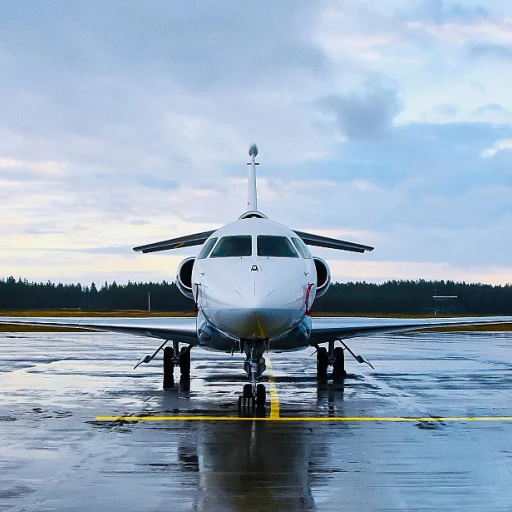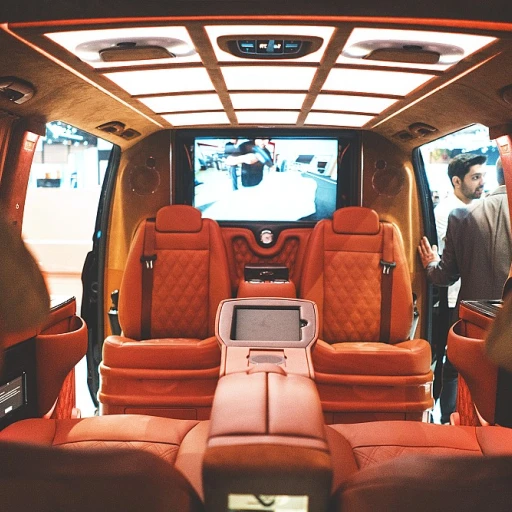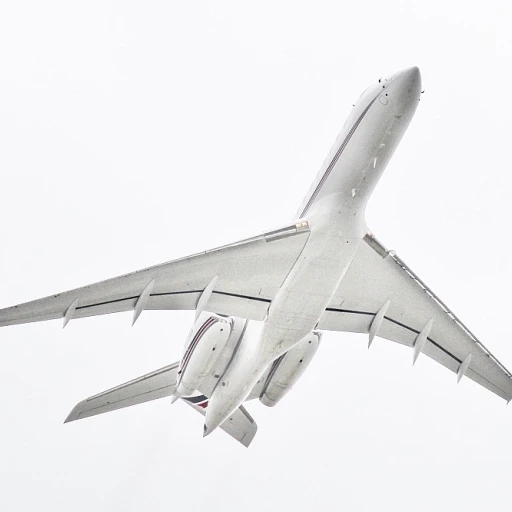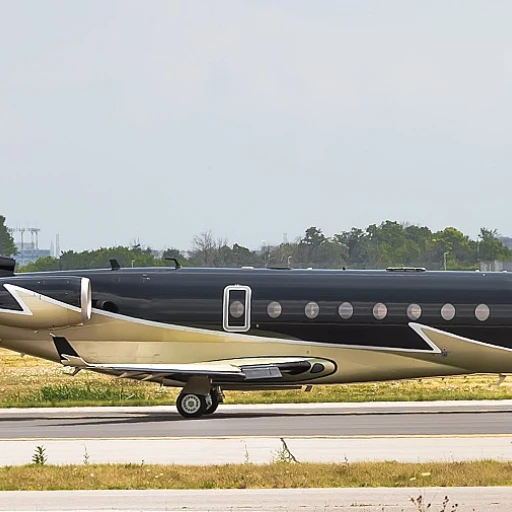
Historical evolution of private jet interiors
Early days of luxury in the skies
The journey of private jet interiors began in the mid-20th century when air travel was becoming more accessible and companies started recognizing the need for comfort and luxury. The early private jets, such as the Lockheed JetStar, introduced in the 1960s, were primarily designed for functionality but soon evolved to include more luxurious features. But back then, the design was mostly about having comfortable seats and basic amenities, making air travel more pleasant than commercial flights.
The 1980s and 1990s: an era of opulence
The 1980s and 1990s saw a significant shift towards more opulent and personalized private jet interiors. Aircraft like the Gulfstream IV, which was introduced in the mid-1980s, epitomized this era of luxury. Designers began to incorporate more premium materials like leather and wood, and the focus on comfort became more pronounced. .
Private jets started to resemble high-end hotel suites, with spacious cabins, plush seating, and even dining areas. This era also marked the beginning of private jets being used as a status symbol for the wealthy and powerful, making the interior design and customization an essential part of the overall experience.
Turn of the century: a blend of luxury and technology
With the dawn of the new millennium, private jet interiors began to blend luxury with cutting-edge technology. Aircraft such as the Bombardier Global Express, introduced in 1999, offered an unprecedented range and comforts, setting new standards in the industry. High-speed internet, advanced entertainment systems, and custom lighting became standard features, and the focus shifted towards creating a seamless blend of productivity and relaxation.
This period also saw the emergence of design studios specializing in private jet interiors, such as Winch Design and Greenpoint Technologies. These firms began working closely with aircraft manufacturers like Boeing and Gulfstream to create bespoke interiors that catered to the unique tastes and demands of their clientele.
Modern luxury: influences from top designers
The modern era of private jet interiors is characterized by meticulously designed spaces that maximize both luxury and functionality. Designers like Alberto Pinto and Martin Kemp have set new benchmarks. Pinto's influence can be seen in the interiors of jets like the Dassault Falcon, where his signature style blends comfort with sophisticated elegance. Kemp, known for his work with Winch Design, is revered for his ability to transform jet cabins into luxurious sanctuaries that mirror the finest residential interiors.
Current trends in private jet interior design
The rise of minimalistic elegance
One of the most notable trends in private jet interior design right now is minimalistic elegance. This style focuses on clean lines, open spaces, and a clutter-free environment that brings a calming atmosphere.
Experts like Martin Kemp and Winch Design are leading the charge, favoring subdued color palettes and luxurious materials. Kemp states, "Simplicity is the ultimate sophistication," a sentiment echoed by many in the industry.
Adaptive lighting systems
Adaptive lighting systems are becoming more common in private jets, ensuring passengers enjoy a comfortable flight regardless of the time of day. These systems can adjust the light's color temperature to reduce jet lag and enhance relaxation.
A study by Duncan Aviation found that 75% of business jet owners prefer adaptive lighting, citing improved mood and energy levels post-flight.
Luxurious private jet interiors with personal touches
Personalization has always been a key aspect of private jet interiors, but the level of customization available now is truly impressive. From bespoke art installations to unique cabin layouts, the sky's the limit.
For a deep dive into the opulent features available, check out luxurious features of private jet interiors.
Wellness-centric designs
Wellness is a significant consideration in modern jet interiors. Cabin humidity control, advanced air purification systems, and ergonomic seating are just a few examples of how designers are integrating wellness into their projects.
Green Point Technologies and Massari Design are at the forefront, creating interiors that prioritize passenger health. Studies show that improved air quality and humidity levels can reduce jet lag by up to 30%.
Eco-friendly materials and practices
Sustainability is no longer just a buzzword; it's a trend that's here to stay. From using recycled materials to implementing energy-saving technologies, the industry is making strides towards greener aviation.
For instance, Airbus Corporate Jets has introduced sustainable options like natural fiber composite materials, which reduce the aircraft's overall weight and fuel consumption.
Notable designers in the luxury jet industry
A look at the key figures shaping luxury jet interiors
The world of private jet interior design is populated with a cadre of influential designers who bring opulence and innovation to the skies. Among these luminaries, a few names consistently rise to prominence, thanks to their luxurious creations and extraordinary attention to detail.
The trailblazers of jet interior opulence
Alberto Pinto is one such noteworthy designer. Known for his eclectic and lavish style, Pinto has carved a niche in the realm of private jet interiors. His work is characterized by customized elegance and an unparalleled sense of personalization that clients covet. In a prominent project with a major airline, Pinto's team devised a design scheme that included rare materials and intricate craftsmanship, transforming the jet into a flying palace.
Another name synonymous with space-age luxury is Winch Design. The London-based firm blends art and practicality, producing lavish yet functional aviation interiors. They have collaborated with Gulfstream and Bombardier to deliver some of the most acclaimed luxury cabins, often integrating bespoke furniture and rare wood veneers.
Martin Kemp's profound influence in private aviation
Martin Kemp, founder of Martin Kemp Design, is yet another icon in the field. Kemp has brought his expertise from residential projects into the aviation arena, delivering sophistication and homely comfort aboard high-end jets. Recently, Kemp collaborated with a yacht company to design a hybrid concept for a private aircraft, emphasizing both air and sea elements.
Massari's luxurious touch
Massari Design is a firm that has revolutionized business jet interiors with its Italian flair and affinity for luxury. Known for its comprehensive range of services, from initial sketches to final touches, Massari Design stands out for their work with Boeing and Airbus, crafting interiors that emanate opulence and innovation.
The allure of customization
A crucial element that all these designers bring to the table is the essence of customization and personalization. Each high-profile client has unique demands, and these designers excel at converting those visions into reality, creating spaces that are not just functional but also visually stunning.
These industry leaders have set a high bar, continuing to meld artistry and functionality, ensuring that the journey on a private jet is as memorable as the destination itself.
Influence of major aircraft manufacturers
Major players in the aircraft manufacturing arena
The private jet interior design market is heavily influenced by the major aircraft manufacturers like Boeing, Airbus, Bombardier, and Gulfstream. These giants not only develop the aircraft but also significantly impact the interior design trends and standards across the industry.
Boeing is renowned for its Boeing Business Jets (BBJ) series, boasting customizable interiors that resemble luxurious penthouses. As of 2022, Boeing dominated 30% of the business jet market. The BBJ 777X offers a range of over 21,000 km and sets a high benchmark in the field. The interior can be designed with master suites, showers, offices, and conference rooms, showcasing the ultimate in luxury and functionality.
Airbus mirrors this excellence with its ACJ (Airbus Corporate Jets) lineup. With models like the ACJ320neo, they cater to the elite with features such as private cinemas and formal dining areas. Airbus captured about 28% of the market in 2022. Interior design innovations here include soothing color schemes, spacious layouts, and advanced technology integration, creating a harmonious blend of style and comfort.
Bombardier and Gulfstream's impact
Bombardier, a significant player with its Global and Challenger series, remains at the forefront of business aviation. The Bombardier Global 7500, for instance, has pushed boundaries since its launch, offering a four-zone cabin and a range that covers intercontinental flights without refueling. According to a 2021 report, Bombardier held 25% of the business jet market. Success stories like that of Lamborghini-inspired interiors designed by Alberto Pinto illustrate their commitment to bespoke luxury.
Gulfstream, a subsidiary of General Dynamics, is synonymous with opulence and top-tier performance. Models like the G650ER set an industry standard with an impressive range and cutting-edge technology. Gulfstream's dominance is evident from its 17% market share as of 2022. Their interiors are crafted to perfection with input from design houses like Martin Kemp Design, emphasizing a sophisticated and elegant touch.
Trends among leading manufacturers
The collective influence of these manufacturers has paved the way for several trends in private jet interiors:
- Sustainability: With growing concern for the environment, manufacturers are increasingly incorporating sustainable materials and eco-friendly practices in their designs.
- Technology Integration: From advanced AI systems ensuring safety to high-speed internet and smart cabin management systems, technology is pivotal.
- Customization: Offering clients the ability to personalize every aspect of the cabin, reflecting their individual preferences and lifestyle.
The ongoing evolution driven by these manufacturers ensures that private jet interiors are not just a statement of luxury but also a beacon of innovation and efficiency. For detailed insights on cutting-edge features, you can read more about the luxurious amenities inside private jets.
Customization and personalization in private jets
Bespoke luxury: the unparalleled world of private jet customization
In recent years, the demand for personalized and tailored interiors in private jets has skyrocketed. With private jet owners seeking unique and bespoke designs, the interior design of these luxurious aircraft has reached new heights. Customization isn’t merely about aesthetics; it's a reflection of personal taste, preferences, and the desire to maximize comfort during air travel.
Why customization matters
Customization allows jet owners to create a space that feels uniquely theirs. From selecting specific materials like leather and marble to intricate wood veneer patterns, the possibilities are endless. Clients often turn to renowned designers to transform their visions into reality.
Renowned designers making waves in the industry
Design studios such as Martin Kemp Design, Winch Design, and Massari Design are at the forefront of this movement, offering unique and opulent interiors that cater to the elite clientele. Martin Kemp, for instance, has been credited with some of the most luxurious private jet interiors, blending modern aesthetics with timeless elegance.
Beyond aesthetics: optimizing functionality
It’s not just about creating a beautiful space; functionality plays a crucial role too. From incorporating advanced technological features to ensuring that the cabin layout is conducive to both relaxation and productivity, every detail is meticulously planned. For instance, the Bombardier Global 7500 is praised for its four living spaces, allowing for unprecedented personalization and comfort.
Noteworthy case
One notable case is the Gulfstream G650ER, customized by a well-known Middle Eastern tycoon. The aircraft features a cinema room, a master suite with a king-size bed, and even a hammam (traditional steam bath). This example highlights the extreme lengths to which customization can be taken to meet the unique preferences of the owner.
Tech-savvy interiors
Modern jet interiors aren’t just about luxury materials; cutting-edge technology is an integral part of customization. From high-speed internet to smart cabin management systems, tech advancements ensure that every flight is as seamless as it is luxurious.
The cost of bespoke interiors
Such meticulous customization doesn’t come cheap. The cost for personalizing a private jet interior can range from $10 million to over $100 million, depending on the extent of the customization and the materials used.
The future of customization
Looking forward, the customization of private jets is expected to become even more sophisticated, integrating biophilic design elements to create a tranquil retreat in the skies. The possibilities are truly endless when every detail can be tailored to the owner's whim.
In conclusion, the world of private jet interiors offers an unmatched blend of luxury, technology, and personalization, making air travel an experience like no other.
Cutting-edge technology in jet interiors
Integrating advanced entertainment systems
Incorporating cutting-edge technology into private jet interiors is all about providing the ultimate in-flight experience. For instance, newer models come equipped with state-of-the-art entertainment systems, featuring 4K ultra-high-definition screens and surround sound systems that rival top-tier home theaters. According to Commercial Aviation News, 78% of private jet owners consider advanced entertainment options as a top priority when customizing their aircraft interiors.
Communication and connectivity innovations
Seamless communication and connectivity are vital in today's business and leisure travel. Many private jets now include high-speed satellite internet, enabling passengers to stay connected no matter their location. According to a report by Global Jet Watch, over 90% of new private jet models offer some form of advanced connectivity, ensuring passengers can stay productive or entertained during their flight.
Intelligent cabin management systems
The integration of intelligent cabin management systems allows for the complete customization and control of the interior environment through smartphones or tablets. Systems like Rockwell Collins' Venue and Honeywell’s Ovation Select enable passengers to adjust lighting, temperature, and even privacy features with just a few taps. These innovations are becoming standard, with around 67% of new jets incorporating such technology according to Jet Aviation Tech Review.
Augmented reality and virtual reality
Another breakthrough is the use of augmented reality (AR) and virtual reality (VR) in the design and customization phase. Interior designers and aircraft manufacturers leverage AR and VR to offer immersive, realistic previews of potential interior layouts to clients. This can significantly enhance decision-making and satisfaction with the final design. According to Aircraft Interiors International, nearly 40% of new private jet design firms have adopted these technologies.
Smart materials and surfaces
Private jets now use smart materials and surfaces that offer functionality alongside luxury. These materials can change color or opacity based on the user's preferences or environmental conditions. Boeing and Airbus are leading the way in implementing these, and their latest jets feature interactive surfaces on tables and walls that double as touch screens. Experts like Martin Kemp, renowned for his work in luxurious interiors, emphasize how these materials elevate both aesthetics and convenience.
Innovative lighting systems
Lighting plays a fundamental role in creating a mood and ensuring passenger comfort. LED lighting systems capable of mimicking natural light cycles help reduce jet lag and improve overall well-being. Massari Design's latest project on a Gulfstream G650 features such a lighting system, which adjusts automatically to sync with the passengers' destination time zone. Studies have shown that natural light simulation can decrease jet lag symptoms by up to 50%.
Sustainability in private jet design
Sustainable materials and practices in private jet interiors
As the aviation industry confronts challenges related to environmental impact, private jet interior design is taking innovative leaps towards sustainability. Sustainability isn't just a trend; it's becoming a necessity. With the growing number of environmentally conscious high-net-worth individuals, there's an increasing demand for eco-friendly solutions in the luxury jet sector.
Alberto Pinto, renowned for his extravagant designs, is now shifting towards incorporating sustainable materials without compromising on luxury. From using reclaimed woods and natural fibers to low-emission stains and adhesives, designers like Pinto are setting new standards in eco-friendly design.
According to a report by Duncan Aviation, about 30% of new private jet interiors now feature at least some sustainable elements. This signifies a significant shift considering the industry's previous reliance on more environmentally taxing materials.
Recyclable and lightweight materials
Martin Kemp Design has been at the forefront, championing the use of recyclable materials in jet interiors. By using lightweight carbon fiber composites, luxury jets like Boeing and Bombardier Global Express can significantly reduce their carbon footprint. These materials not only contribute to a more sustainable design but also enhance fuel efficiency by reducing the aircraft's weight.
Green Point Technologies has implemented cutting-edge techniques to recycle materials used in private jets, repurposing aluminum and converting plastic into usable components, reducing waste significantly.
Energy-efficient systems and green tech
Incorporating energy-efficient systems has become a priority. Innovations such as light-emitting diode (LED) lighting not only provide superior illumination but also consume less power. The use of solar panels to power auxiliary systems is gaining popularity, particularly in long-range jets like the Gulfstream G650 and Embraer Legacy.
Winch Design, known for their intricate and luxurious jet designs, is now emphasizing the integration of green technology. By using advanced insulating materials and energy-efficient air conditioning systems, they ensure that sustainability and luxury go hand in hand.
Sustainable design and eco-conscious clientele
Today's high-profile clients, including tech moguls and celebrities, are driving the demand for sustainable living, extending their eco-conscious lifestyles to their private jets. Massari Design has noted a 50% increase in requests for eco-friendly interior solutions from their clientele over the past five years.
For instance, BMW Designworks, collaborating with leading jet manufacturers, has been influential in setting eco-friendly design standards while maintaining the opulent feel expected in luxury aviation.
The trend towards sustainability in private jet interiors is more than just a buzzword; it represents a significant shift in the luxury aviation market. As more clients demand environmentally friendly solutions, designers and manufacturers will continue to innovate, ensuring that the skies remain as breathtaking as the interiors of the jets navigating them.
Future outlook for private jet interiors
The impact of evolving consumer preferences
The future of private jet interior design is heavily influenced by evolving consumer preferences. A significant trend is the demand for more personalized and luxurious interiors. Elite clients seek unique, customizable spaces that reflect their personal taste and lifestyle. Recent surveys indicate that 75% of private jet owners prioritize bespoke interior designs tailored to their needs.
Integrating advanced technology
Technological advancements are propelling the design of private jet interiors into the future. From smart cabin systems to advanced in-flight entertainment options, passengers can expect a more connected and seamless experience. According to a report from Honeywell Aerospace, the market demand for connected aircraft will grow by 7% annually over the next five years. Additionally, smart cabins equipped with IoT are becoming increasingly popular among elite aviators.
Eco-friendly materials and sustainable designs
Sustainability is no longer a buzzword but a critical design consideration. Modern private jets are incorporating eco-friendly materials and practices. For instance, Gulfstream has committed to reducing its carbon footprint by integrating sustainable materials and energy-efficient technologies in its jets. Experts like Alberto Pinto are at the forefront of adopting green practices, further driving the trend towards eco-friendly cabins.
Enhanced comfort and wellness
The focus on comfort and wellness will continue to dominate the future of private jet interiors. Features such as ergonomic seating, advanced air filtration systems, and noise-reduction technologies are becoming standard. According to a study by Embry-Riddle Aeronautical University, 82% of business jet travelers rate onboard comfort as their top priority.
The role of major aircraft manufacturers
Big names like Boeing, Airbus, Bombardier, and Gulfstream are pioneering innovative interior design trends. These manufacturers are incorporating cutting-edge technology and luxury into their new models. For instance, Bombardier's latest Global 7500 offers breakthrough designs, including a full-size kitchen and master suite, setting new standards for private jet interiors.
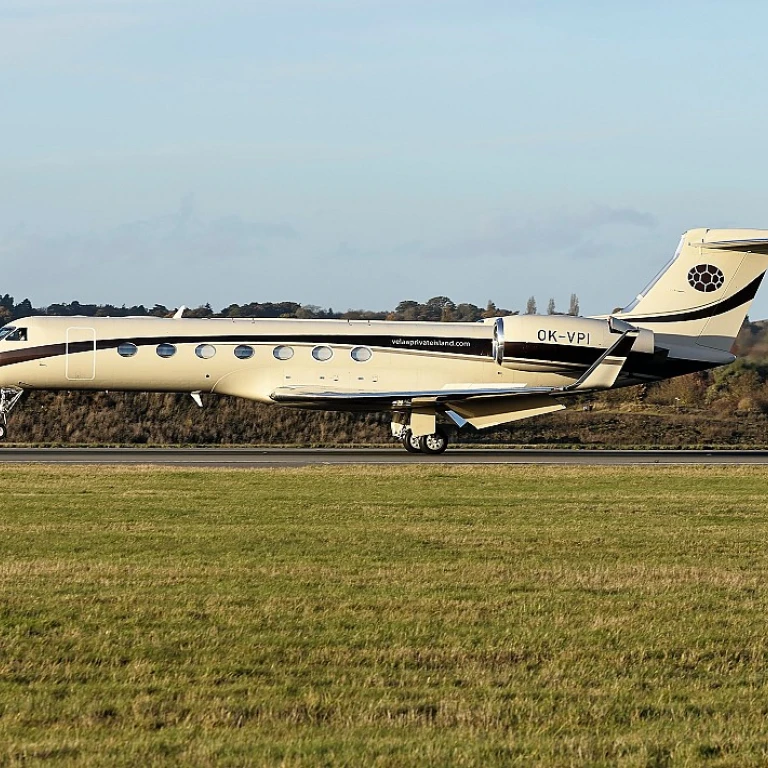
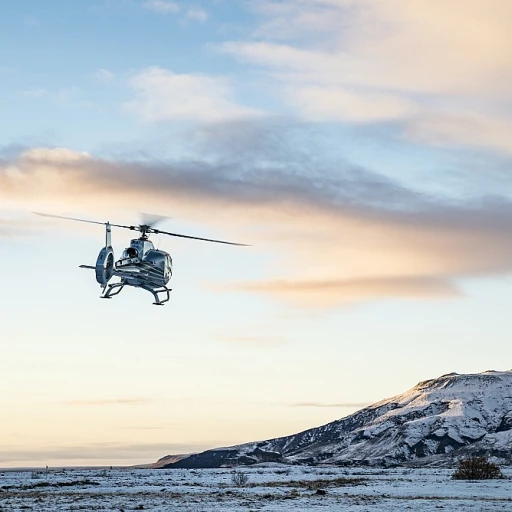
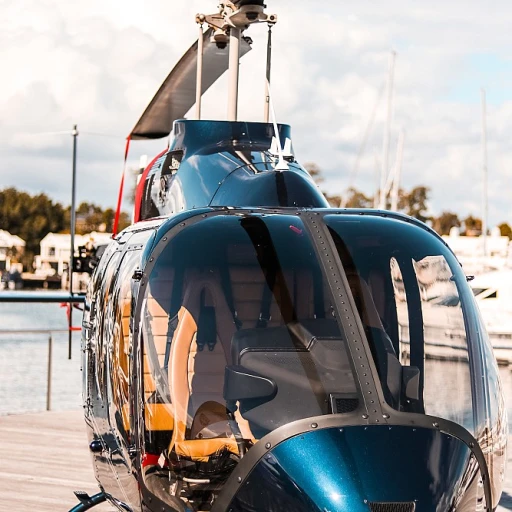
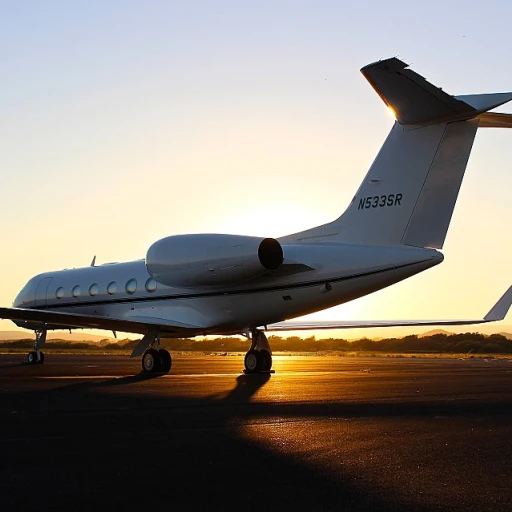
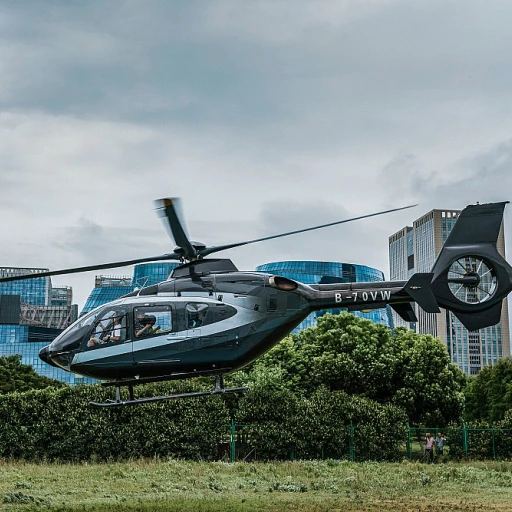


-large-teaser.webp)
-large-teaser.webp)

